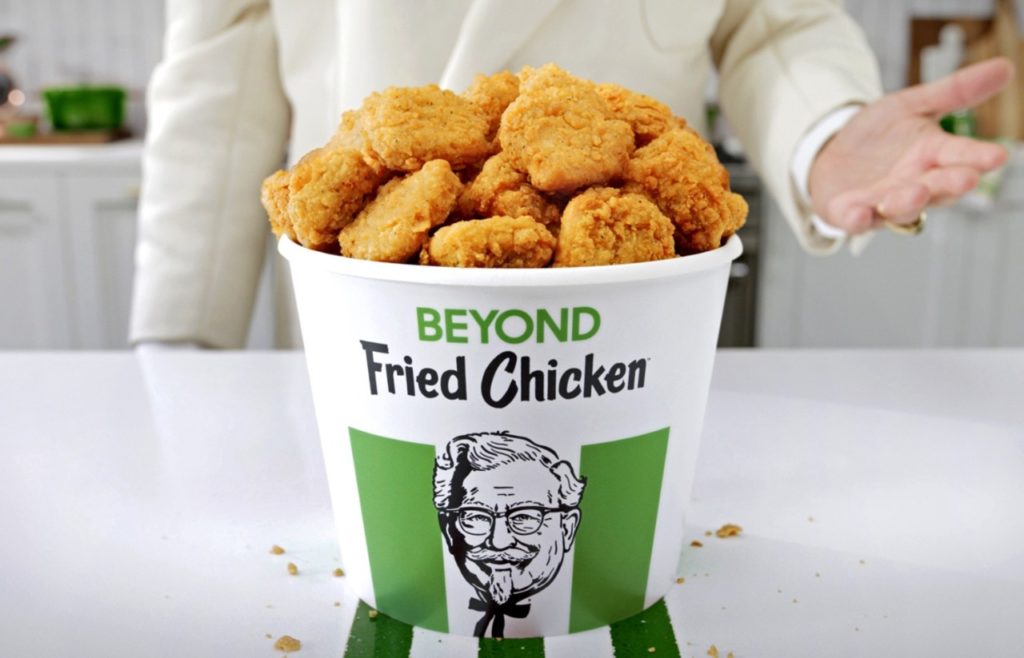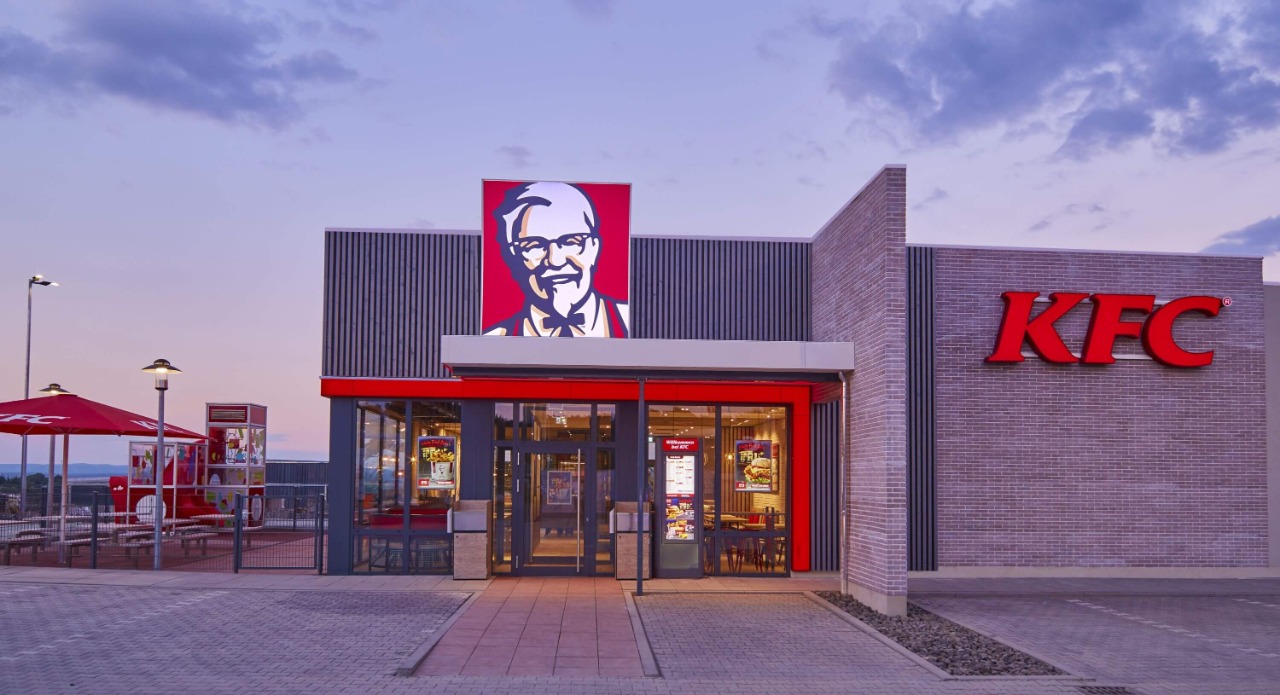Have you been repeatedly turned down or disappointed? Well, the maker of Kentucky Fried Chicken, Colonel Harland Sanders, also did. But he learned from his mistakes and not only made lemonade, but he, too, made the world a better place by introducing Kentucky Fried Chicken, also known as KFC today.
KFC is an American fast-food restaurant chain located in Louisville, Kentucky, which specialized in fried chicken at the time of its inception. In the year 1930, Colonel Harland Sanders, who was an entrepreneur, discovered this global fast-food giant. Currently, it is the second-largest restaurant chain in the world after McDonald’s (as calculated by sales). It is a subsidiary of the restaurant group Yum! Brands, which also operates the chains Pizza Hut, Taco Bell, and WingStreet.

Why did KFC change the name?
Kentucky Fried Chicken was formally rebranded as KFC back in 1991. But why, then? The explanation was pretty straightforward as it turned out, but there are a lot of hypotheses as to why this happened.
One reason is that a concern emerged with the name of the business using the word “chicken.” There were reports at the time that KFC was using genetically manipulating “mutant” birds, which were later found to be “fake news.”
Many hypotheses abounded, including the urge of the organization to exclude all reference to the fried word to avoid turning off health-conscious patrons. Yet the actual explanation for this is even less dramatic. They just wanted to have the name shortened. KFC is much easier to say, and consumers already used it as a shortcut for their company. That has not yet stifled other rumors that you can find on the net, however.
KFC Outlets
The chain has been named as one of the first fast-food chains in America to grow globally. By the mid-1960s, it opened the distribution outlets in Canada, the UK, Mexico, and Jamaica. It underwent several corporate ownership changes during the 1970s and 1980s.
There are around 23,000 outlets in 119 countries, till the year 2018. Outlet expansion was undertaken in the Middle East, and Asian markets were developed from the mid-1970s to the 1980s. Latest expansion zone in Africa.
Its markets include China with 4563 units, the USA with 4491 units, Japan with 1181 units, the UK with 900 units, Thailand with 531 units, Australia with 618, Canada with 663 units, South Africa with 736 units followed by Malaysia and Russia with 701 and 608 units respectively. The bulk of the restaurant is decorated with pictures of Colonel Harland Sanders, the founder of the company. It also offers drive-through, dine-in, and take-out options.
Operations of the Franchise
The KFC brand has grown leaps and bounds over the years, giving McDonald’s on each front a fierce competition. It generates its revenue through the numerous franchisors it has opened in various countries. The growing franchise must pay the Master franchisor a fee based on a turnover. Individually, the franchise is an individual company, but it suits the franchise’s method of operation. For all of its franchisees, the master franchisor has set certain guardrails which cover the degree of food quality and cleanliness of the store. Few are listed below –
- Geographic segmentation
- KFC target market
- KFC competitive advantage
- KFC pricing Strategy
- KFC marketing mix
KFC – The Leading Fast Food Chain in India
KFC became the first international fast food restaurant chain to reach India in the 1990s after the Indian government introduced the economic liberalization policy. It then obtained permission from the Indian government to open thirty outlets across the country.
In June 1995, the first outlet in India was opened in Bangalore, and today the number has risen to 296 outlets. Fast food restaurants have gained popularity in India, owing to their personalized menus that match the citizens’ taste buds. Many people have the impression that KFC sells only fried chicken. But it has added many vegetarian items to its menu in India- Veg Zinger, Veg Rice Bowlz, and Veg Strips.
When it first entered the Indian market, there were plenty of protests and repeatedly ransacked the Bangalore outlet. Many Indians were afraid that western culture would slide into the Indian roots, leading to indigenous practices being diluted. To prevent more onslaughts at the outlet, its management ordered that a police van be permanently stationed outside for nearly a year. Another outlet was opened in the same year in Delhi, but the combined revenue from both the Bangalore and Delhi outlets wasn’t enough to continue its operations in India. As a result, KFC left the Indian market.
It returned to the country in 1999 once again and set up an outlet in Bangalore. The management decided to operate only one distribution outlet in India until 2004 until the single outlet began to make money; it then expanded its operations throughout India. It was India’s fastest-growing major chain in 2012, posting year-over-year growth of 45 percent in revenue, based on a 41 percent rise in outlets (62 net add). This degree of growth has led the organization to become India’s third-ranked brand, a fact that is especially noteworthy in terms of widespread expansion, given that they were a relatively late entrant.
Also Read: Axe – Making An Unconventional Yet Uncomfortable Brand Legacy
Marketing strategy of KFC
KFC, the profitable brand of the parent company YUM! Brands is the world’s 2nd largest fast-food chain and largest chicken restaurant, based on sales. It’s been more than 75 years after its invention, and yet, it’s original fried chicken recipe satisfies customers’ taste buds because it’s still finger-licking’ good!!
With a workforce of 750,000 +, it serves fried chicken to customers in almost 18,000 restaurants worldwide in over 120 countries. It uses demographic segmentation to meet consumer demand according to the needs and desires of the customer. Its users are the youth and aging adults alike. It used to serve the same menu all over the world as it used an undifferentiated targeting strategy.
Recently, however, the chain has started to find its list popular among consumers. Also, it has recently changed its positioning strategy from product-based to value-based service. With its chicken menu, KFC is firmly placed in customers’ minds. The wings of chicken and bucket of chicken are a favorite among all. The reason why most non-vegetarian lovers flock at KFC is this excellent targeting strategy.
Distribution strategy of KFC
With its restaurants serving delicious fast food all over the world, it has evolved over the years and maintained close relations or strategic alliances with supply chain partners to helps them better serve their customers. It still believes in having its store in prime areas as well as in shopping centers and malls. Such stores will also deliver on their online orders. It, thus, includes both online and offline deliveries.
Dealing with the competition
KFC faces heavy competition from McDonald’s, Kokoriko, Kyochan, and several other fast-food firms locally & nationally. In developed nations, the local fast-food joints are also offering stiff competition. The numerous fast food outlets share the market in developed countries. McDonald’s and Subway are among KFC’s significant competitors. Both are in the burger category, and where McDonald’s is serving burgers, Subway has sandwiches on sale. Subway has yet to hit its maximum distribution potential, but with its massive global footprint, KFC and McDonalds are always on loggerheads.
Lessons from the brand
There are several key lessons that other brands should take from KFC’s success. First, the value of menu localization can not be overestimated, especially in a market with its own well-developed dining culture. Successful brands would need to take significant measures to close the gap between delivering a fresh, thrilling dining experience and one that is sufficiently familiar and realistic to encourage customers to dine outside their homes.
Second, organizational problems are just as critical as the acquisition of consumers, and operators that are not diligent in building their supply chain are likely to consider success impossible. KFC has been successful in using pricing, product mix, and branding to reach young people, a customer base that can develop with the chain in the future.



